shared research equipment
Equipment Guidelines
- Any research equipment stored in DLAR is considered shared equipment. This does not mean that you may use any equipment use see. Prior authorization is required.
- Use must be approved by DLAR and the owner of the equipment BEFORE use.
- Treat all DLAR and research equipment with respect and care.
- User's lab is responsible for any damage to the equipment and its repair/replacement cost.
Equipment list by category
behavioral & activity
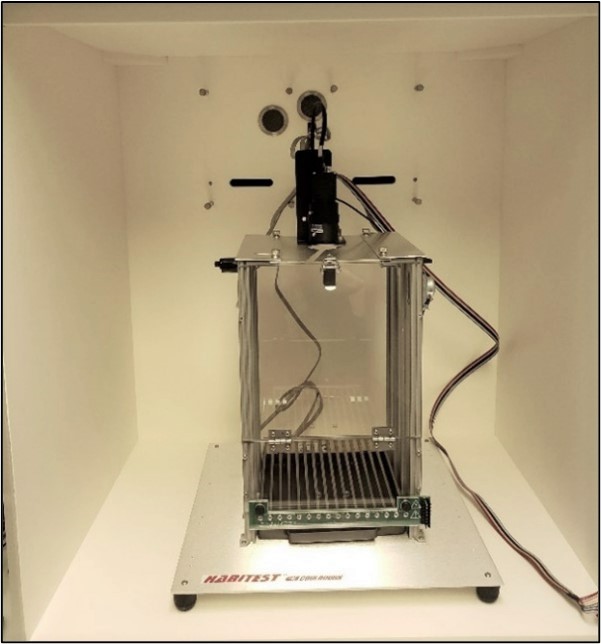
Coulbourn Habitest Apparatus
Link: Coulbourn Habitest
Description: Designed for tone associated foot shock stimuli. Comes with FreezeFrame software for automated animal movement analysis.
Designed for use with mice only.
Owner: Dr. Ipe Ninan
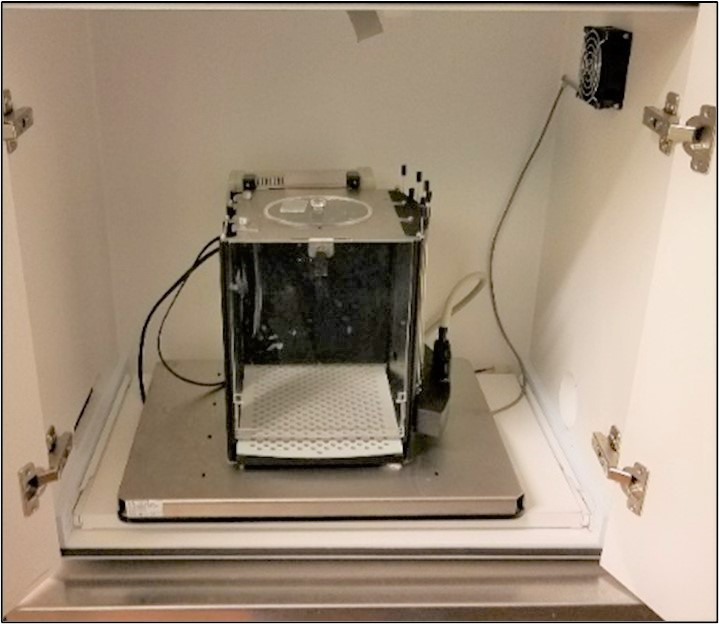
Nine-Hole Choice Box
Description: Used with behavioral test 5 Choice Serial Reaction Time Task (5-CSRTT). This measures the attention, impulsivity, and perseveration of the mouse.
Designed for use with mice only.
Owner: Dr. F. Scott Hall
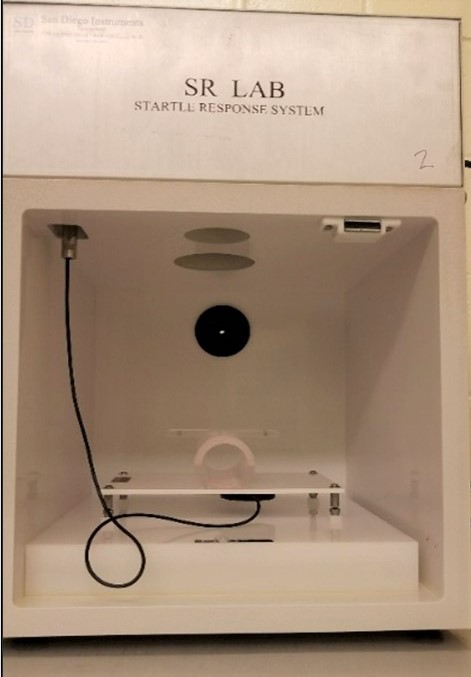
Startle Response System
Description: The startle response system is the world’s most widely used startle reflex behavioral research system and the most successful measuring of startle habitation, pre-pulse inhibition, and Fear Potentiated Startle (FPS). Widely used to measure pre-attention deficit as sign of several psychological disorders like ADHD, schizophrenia, and depression.
Designed for use with mice only.
Owner: Dr. F. Scott Hall
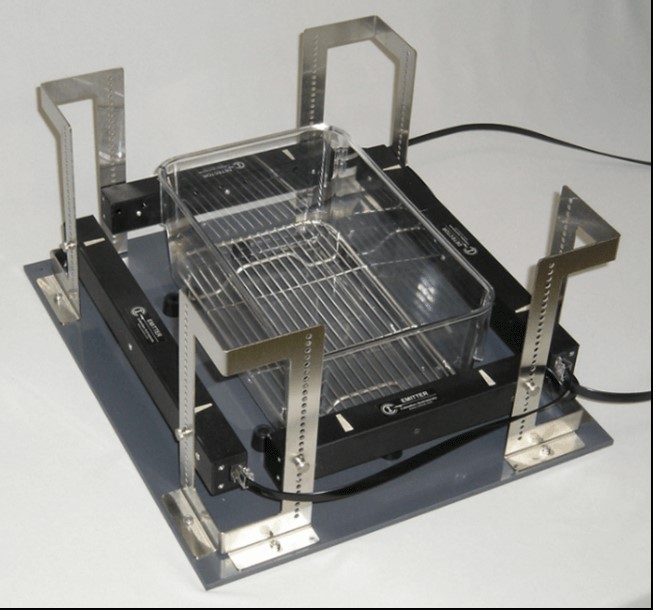
Activity Meter
Description: Multi-channel activity monitor that supports a variety of sensor lengths and configurations. Up to 32 channels are supported providing both ambulatory and total counts for each channel.
Owner: Dr. F. Scott Hall
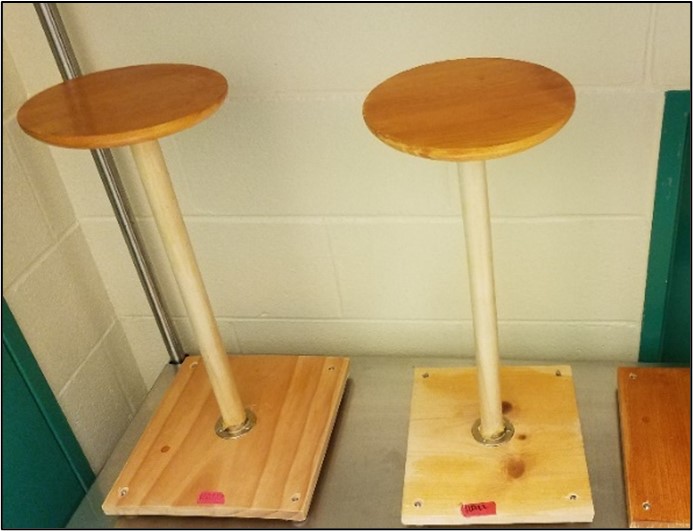
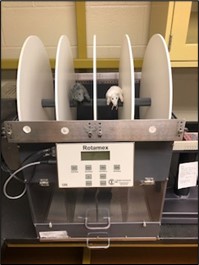
Rota Rod Rotamex
Description: Classic rotating rod enhanced with features that assist monitoring and recording animal performance. Up to four animals may be simultaneously tested for their ability to maintain themselves upright on a rotating rod. Speed and acceleration rate are programmable. An animal fall is detected by infrared photocells which cross the space just above the spindle. Once all the photocells lose sight of the animal, the time is recorded.
Owner: Dr. Zahoor Shah
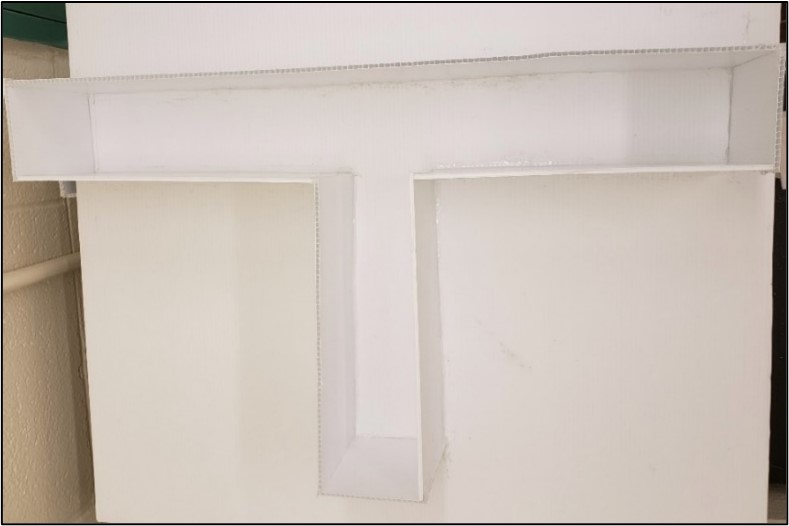
T-Maze
Description: An enclosed apparatus in the form a t-shape. Used to assess the cognitive ability of mice.
Owner: Dr. Zahoor Shah
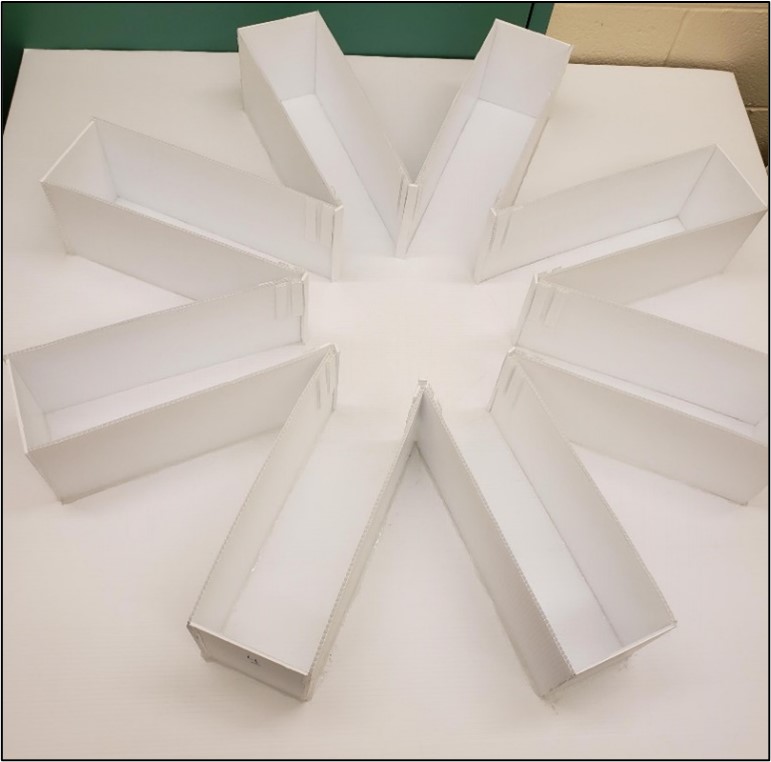
T-Maze
Description: An 8-arm maze used to investigate both short-term memory and long-term reference memory errors in mice.
Designed for use with mice only.
Owner: Dr. Zahoor Shah
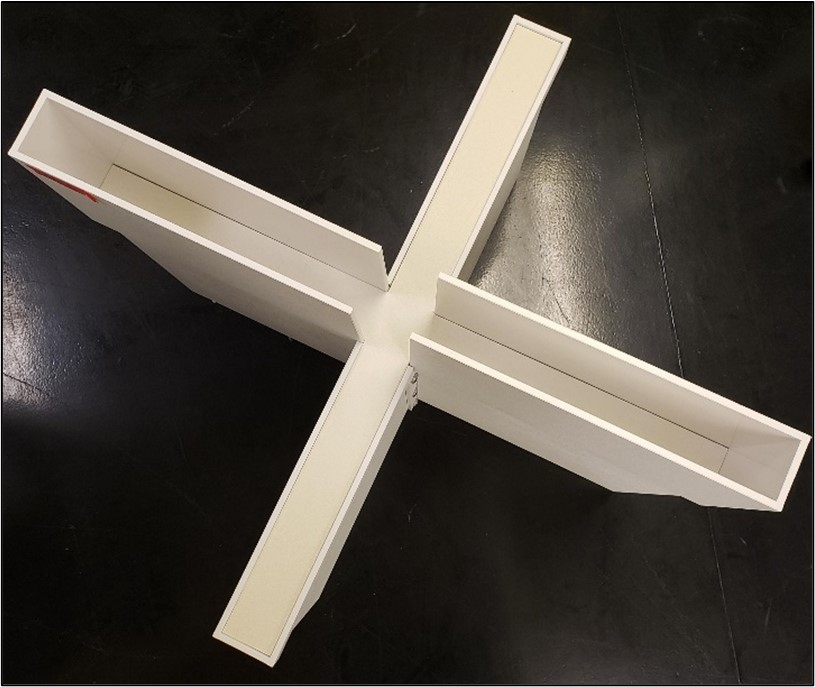
Elevated Plus Maze
Description: This maze measures the attention, impulsivity, and perseveration of animal.
Owner: Dr. F. Scott Hall
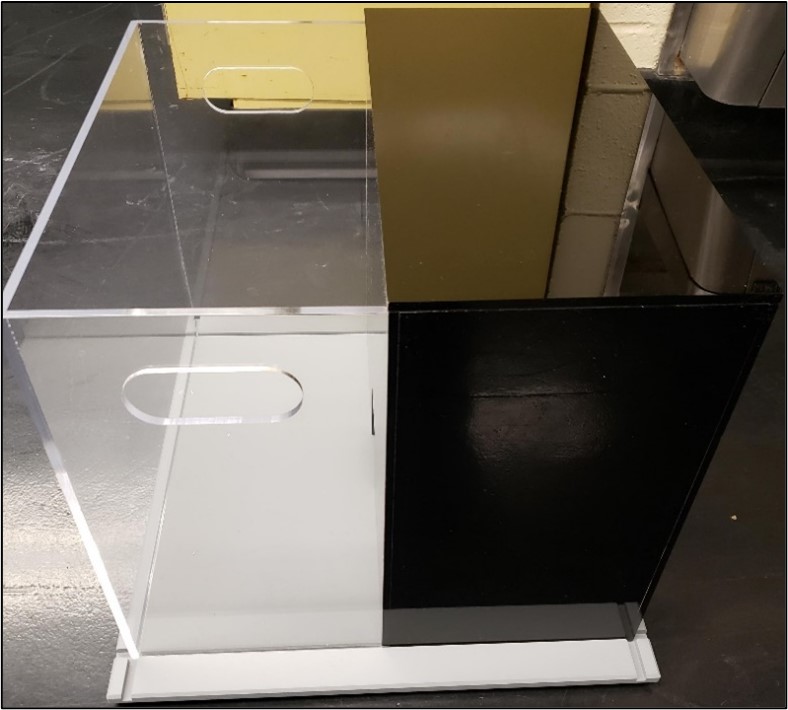
Light-Dark Box (LDB)
Description: The LDB apparatus has two compartments; a light compartment that is brightly lit and open and a dark compartment that is covered and dark. A door connects the two. The LDB is used to investigate unconditioned anxiety responses in rodents.
Owner: Dr. F. Scott Hall
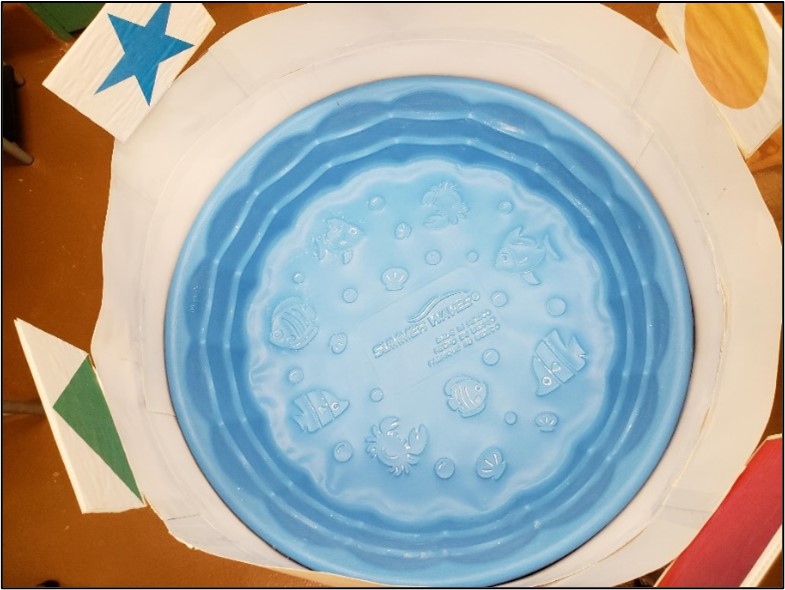
Morris Water Maze
Description: A round warm water filled pool with a hidden platform used to assess special learning memory in mice.
Owner: Dr. Zahoor Shah
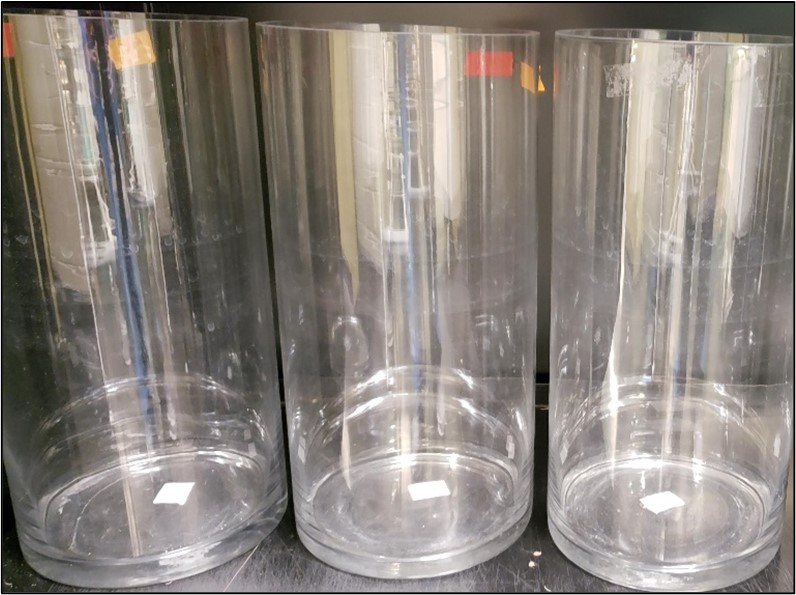
Forced Swim Test
Description: The behavioral despair test (or forced swimming test, FST), is used for evaluation of antidepressant drugs, antidepressant efficacy of new compounds, and experimental manipulations that are aimed at rendering or preventing depressive-like states
Owner: Dr. F. Scott Hall
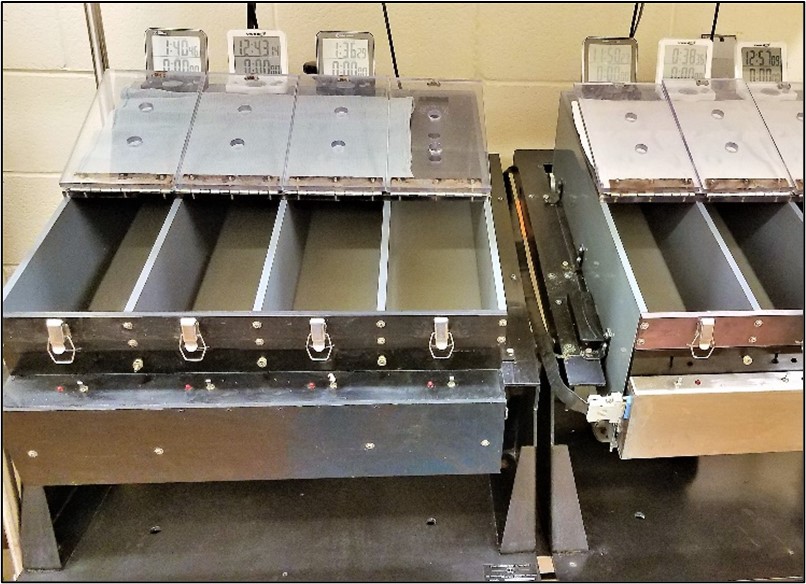
Treadmill Simplex
Description: The behavioral despair test (or forced swimming test, FST), is used for evaluation of antidepressant drugs, antidepressant efficacy of new compounds, and experimental manipulations that are aimed at rendering or preventing depressive-like states.
Owner: Dr. Lauren Koch
imaging
Note: This equipment requires hands-on training.
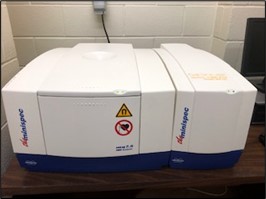
Magnet NMR Minispec
Link: Minispec Details
Description: This equipment allows for a noninvasive measurement of lean and fat mass in mice which may be repeated as the animal ages.
Owner: Dr. Jennifer Hill
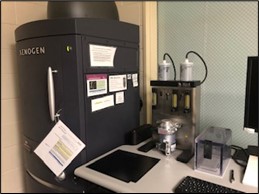
IVIS Spectrum In-Vivo Imaging System
Link: IVIS Spectrum Details
Description: Capture bioluminescent and fluorescent reporters across the blue to near infrared wavelength region. It also offers single-view 3D tomography for both fluorescent and bioluminescent reporters.
Owner: Dr. Andrea Kalinoski
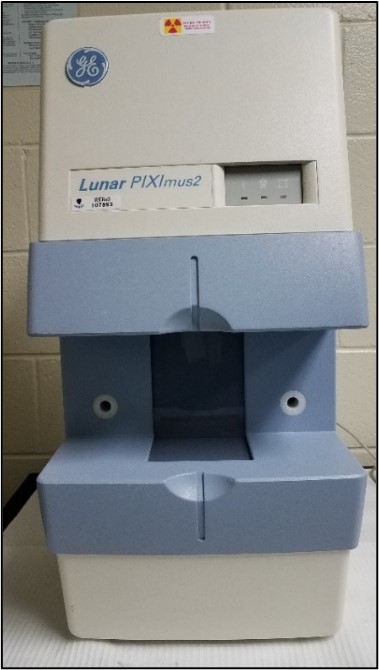
GE Lunar PIXImus2: bone Densitometer
Description: Provides bone mineral and body composition results from total body imaging. Uses a lower x-ray energy than that used for peripheral densitometry in order to achieve contrast in the extremely low-density bone. Excellent precision of BMD and %Fat. The standard total body focuses on the active bone area in the subcranial region.
Owner: Dr. Beata Lecka-Czernik
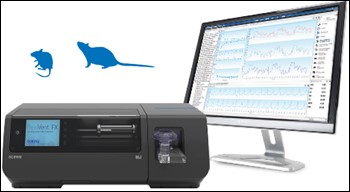
Scireq FlexiVent Ventilator
Link: flexiVent | SCIREQ
Description: Captures resistance and compliance measurements and details about the mechanical properties of conducting airways, terminal airways, and parenchyma. Applications: Asthma and Airway Hyperresponsiveness, Drug Development, Phenotyping and Genetic Studies, Chronic Obstructive Pulmonary Disease (COPD), Allergic Rhinitis, Preclinical Thoracic Imaging, Fundamental Respiratory Mechanics Research, Cardiopulmonary
Owner: Dr. Sailaja Paruchuri

Siemens Acuson Sequoia C512 Ultrasound
Link: Siemens Ultrasound Details
Description: Unparalleled imaging capacity easily and seamlessly determines, calculates, and adapts in real-time to a patient’s individual acoustic properties. Offering high image quality and improved workflow for a range of patient types and applications.
Owner: Dr. Andrea Kalinoski
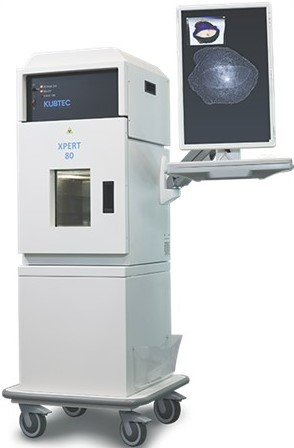
KUBTEC® Cabinet X-ray
Link: KUBTEC XPERT® 80 Specimen Radiography System
Description: Standalone unit that provides high-resolution X‑ray images for pathology and creates optical images of your specimen for multiple applications including bone mineral density/body composition and small animal imaging.
Owner: Dr. Xiaohong Li
clams systems
Note: This equipment requires hands-on training.
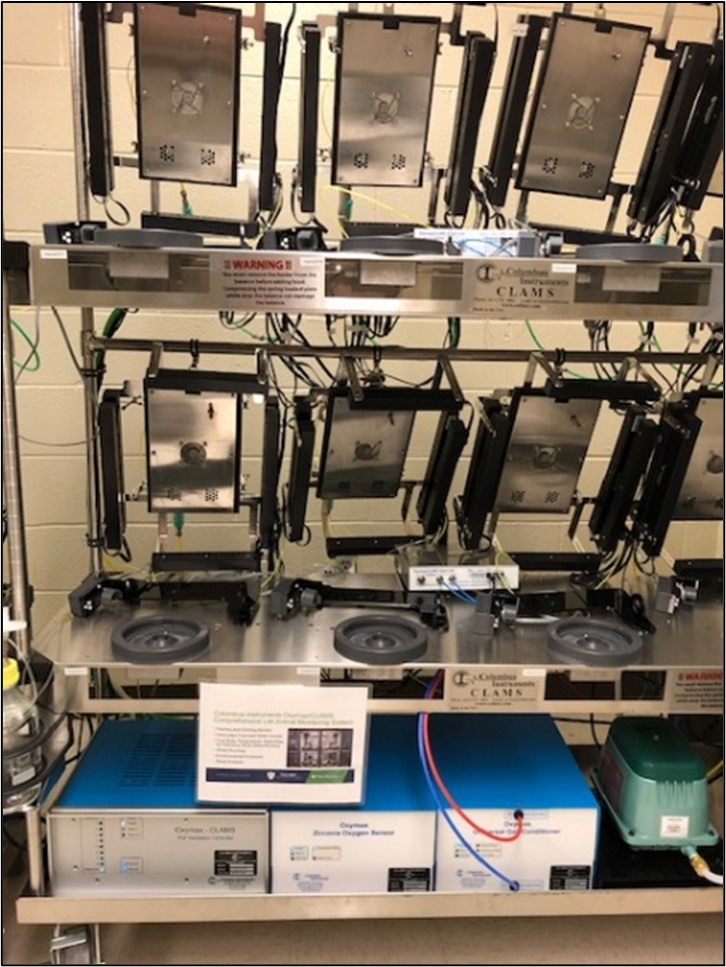
Rat CLAMS
Description: The system monitors oxygen and carbon dioxide concentrations by volume at the inlet and outlet ports of a chamber, canopy, tent, or mask through which a known flow of air is being forcibly ventilated.
Owner: Dr. Bina Joe
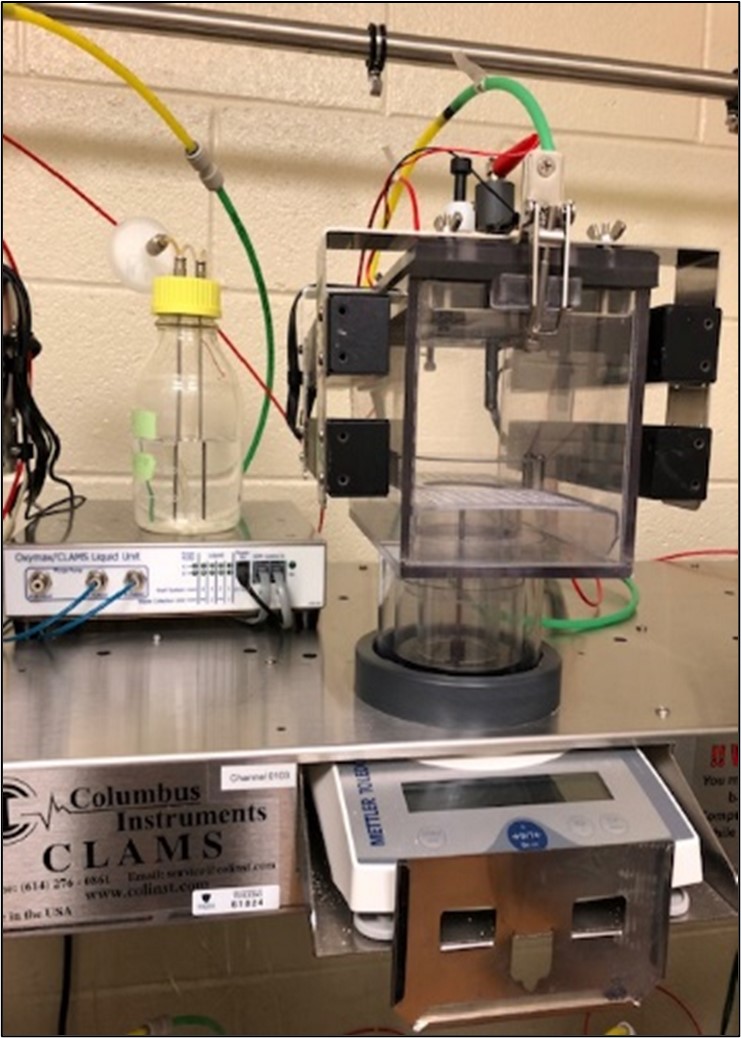
Mouse CLAMS
Description: The system monitors oxygen and carbon dioxide concentrations by volume at the inlet and outlet ports of a chamber, canopy, tent, or mask through which a known flow of air is being forcibly ventilated.
Owner: Dr. Beata Lecka-Czernik
metabolic units
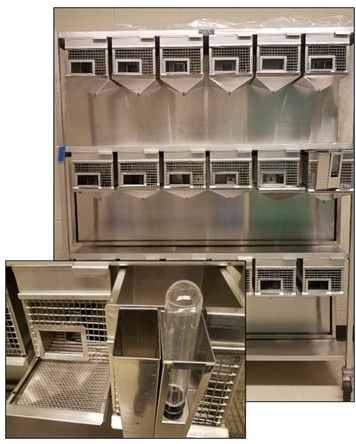
Rat Metabolic unit
Description: Each cage is equipped with a funneled metabolism pan. By design, feces is kept separated from the urine which flows into a receptacle (i.e., graduated cylinder) placed under each pan. There is also a food and water runoff pans to keep from mixing with the urine specimen.
Owner: DLAR
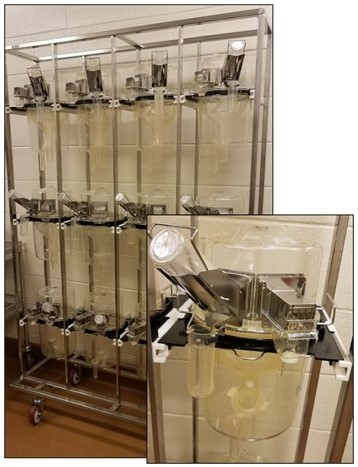
Mouse Metabolic unit
Description: Funnel and cone design effectively separates feces and urine into tubes outside the cage for untainted and reliable samples. All parts below the cage floor are removable without disturbing the animals including the feces and urine collection tubes.
Owner: DLAR
BP Measurements
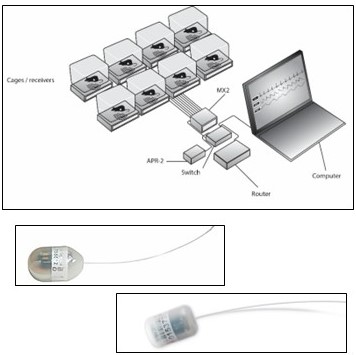
PhysioTel HD and PhysioTel Hardware
Description: Measures blood pressure with the assistance of an implanted transmitter. DSI's PhysioTel™ implants are designed for acquiring data from conscious, freely moving laboratory animals, providing stress-free data collection while enhancing animal welfare.
Owner: Dr. Bina Joe
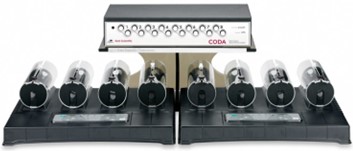
CODA® Tail-Cuff Blood Pressure System
Link: External link to the CODA System Details
Description: The CODA® mouse and rat tail-cuff system accurately measures the blood pressure of a single mouse or rat. In all, the CODA® monitor measures six blood pressure parameters: systolic, diastolic, and mean BP, heart rate, tail blood volume and blood flow.
Owner
- Rats System: Dr. Bina Joe or Dr. David Kennedy
- Mice System: Dr. Wissam Abou-Alaiwi
Blood & urine analysis
Note: This equipment requires hands-on training.
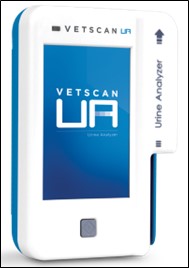
Vetscan UA
Link: Vetscan Urinalysis
Description: The VETSCAN UA is an easy-to-use urine chemistry analyzer that automates urinalysis test strip reading, providing reliable veterinary urine chemistries that include results for urine protein:creatinine (UPC) ratio and microalbumin.
Owner: Dr. Lauren Koch
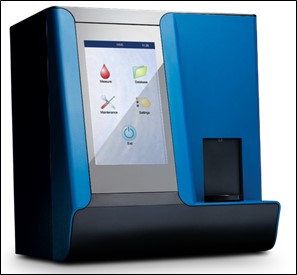
Vetscan HM5 Five-Part Differential
Link: Vetscan HM5
Description: The VETSCAN HM5 is a fully automated, five-part differential hematology analyzer displaying a comprehensive 22-parameter complete blood count (CBC) with cellular histograms.
Owner: DLAR
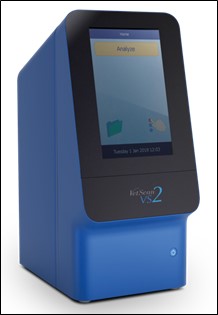
Vetscan VS2
Link: Vetscan VS2
Description: The VETSCAN VS2 is a state-of-the-art chemistry, electrolyte, immunoassay, and blood gas analyzer that delivers uncompromising accuracy from just two drops of whole blood, serum, or plasma.
Owner: DLAR
miscellaneous
Note: This equipment requires hands-on training.
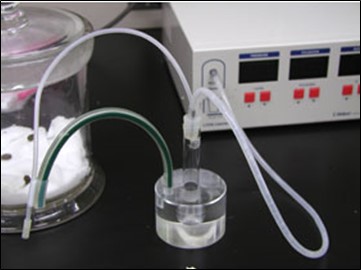
Automated Milker
Link: Automated Milker
Description: Ideal for the analysis of breast milk composition. Automated milker provides researchers the ability to collect rat/mouse milk directly from the teat. Collects milk from lactating mothers by alternating negative and atmospheric pressures through two solenoid valves and a vacuum pump attached to a microcomputer.
Owner: Dr. Bina Joe


